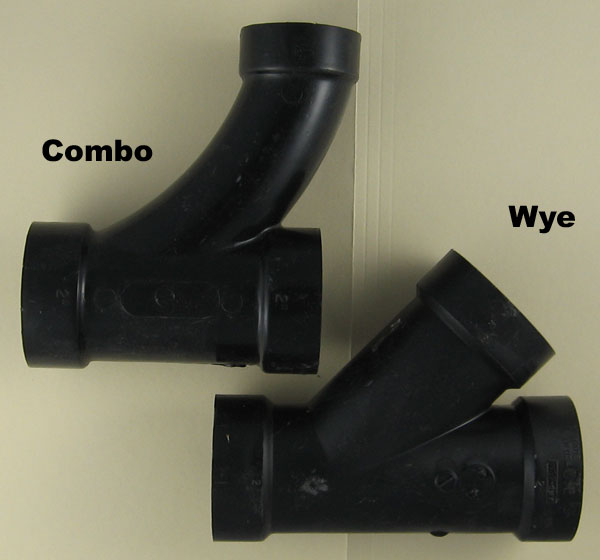polacek
New Member
Details:
House built in 1972. Concrete throughout - walls and all floors. Owner/builder was in the military. Wanted to be safe I guess.
Copper throughout; drain and vent lines.
Bottom pic: is the overall project area. Toilet A is area in question.
Upper left pic: Proposal - right red box is coupling, left red box is DWV Y, black box is ABS line for new toilet location
Upper right pic: Toilet A, to be moved and capped
Question one:
Is it worth it to remove a 15' 3" copper vent, scrap it and replace with ABS? I have complete access to the vent line right now. What about replacing the rest of the copper with ABS and scraping the copper? Is there a chart as to how much elbows, unions, etc weigh?
Question two:
I am moving a toilet line 6 feet. Do I need to add a vent? What is the best way of joining the new 3" toilet line? I was thinking of using:
a) 3" Cast Copper DWV Y, attach a small section of 3" copper pipe and then add a rubber boot to attach to ABS
b) 3" Cast Copper DWV Y, attach a small section of 3" copper pipe, attach
3" Copper DWV Male Adapter, screw on Female ABS adapter
I understand that "b" will be more expensive, but I do not want any leaks as there will be computers (home office) below all that plumbing.
Question 3:
How do I physically add the 3" Cast Copper DWV Y into the main line. I do not have any way of moving the main line left or right. Would I cut out the existing line a little longer and add a coupling to the setup?
Question 4:
Should I prepare to use an oxy/acetylene setup as apposed to the standard propane torch? Lotta copper there..
Thank you all for the help!
House built in 1972. Concrete throughout - walls and all floors. Owner/builder was in the military. Wanted to be safe I guess.
Copper throughout; drain and vent lines.
Bottom pic: is the overall project area. Toilet A is area in question.
Upper left pic: Proposal - right red box is coupling, left red box is DWV Y, black box is ABS line for new toilet location
Upper right pic: Toilet A, to be moved and capped
Question one:
Is it worth it to remove a 15' 3" copper vent, scrap it and replace with ABS? I have complete access to the vent line right now. What about replacing the rest of the copper with ABS and scraping the copper? Is there a chart as to how much elbows, unions, etc weigh?
Question two:
I am moving a toilet line 6 feet. Do I need to add a vent? What is the best way of joining the new 3" toilet line? I was thinking of using:
a) 3" Cast Copper DWV Y, attach a small section of 3" copper pipe and then add a rubber boot to attach to ABS
b) 3" Cast Copper DWV Y, attach a small section of 3" copper pipe, attach
3" Copper DWV Male Adapter, screw on Female ABS adapter
I understand that "b" will be more expensive, but I do not want any leaks as there will be computers (home office) below all that plumbing.
Question 3:
How do I physically add the 3" Cast Copper DWV Y into the main line. I do not have any way of moving the main line left or right. Would I cut out the existing line a little longer and add a coupling to the setup?
Question 4:
Should I prepare to use an oxy/acetylene setup as apposed to the standard propane torch? Lotta copper there..
Thank you all for the help!
Attachments
Last edited:





